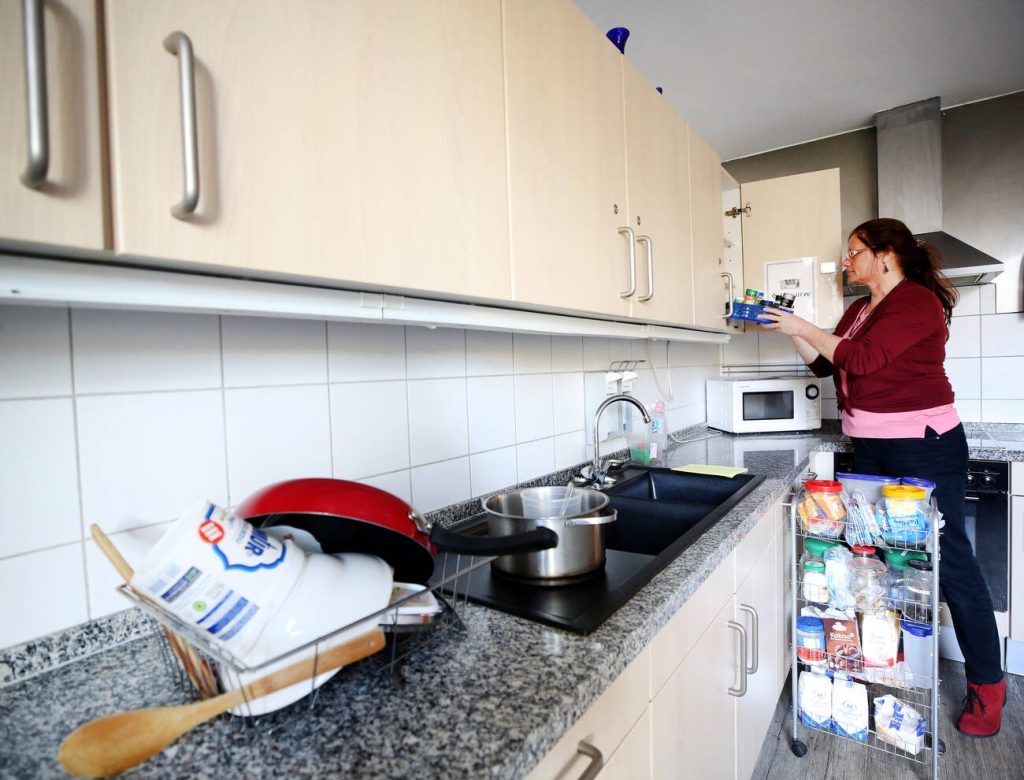Ready to kick back and savor a smooth, refreshing cup of cold brew? Dive into the world of making your own delicious coffee creation! From selecting the perfect beans to finding the ideal brewing time, this guide will walk you through each step with ease. Get ready to elevate your coffee game and enjoy the rich flavors and health benefits of cold brew like never before. Let’s get started on your cold brew journey!
Choosing the Right Coffee Beans
When making cold brew coffee, you’ll want to choose coffee beans that are coarsely ground for the best flavor extraction. Roasting techniques play a crucial role in determining the final taste profile of your cold brew. Lighter roasts may offer fruity and floral notes, while darker roasts tend to be bolder with chocolatey or nutty undertones. Consider exploring various coffee origins to find beans that align with your preferred flavor profile. Quality brewing equipment ensures consistency in each batch of cold brew you make. Optimal grind size is essential; a coarse grind prevents over-extraction, resulting in a smoother brew. Lastly, using high-quality water is vital as it makes up the majority of your cold brew – so ensure it’s clean and free from impurities before starting the brewing process.
Grinding the Coffee Beans
For grinding the beans, you’ll want to use a coarse setting on your grinder to achieve the best results for your cold brew. Bean quality plays a significant role in the flavor profile of your coffee, so opt for high-quality beans for a better taste. The grind size is crucial in cold brewing; a coarse grind allows for proper extraction without over-extraction that can lead to bitterness. When it comes to brewing techniques, steeping time is key. Let the coffee grounds steep in cold water for around 12-24 hours for optimal flavor extraction. Cold brew ratios are also essential – a good starting point is using 1:4 coffee-to-water ratio, but feel free to adjust based on personal preference and strength desired.
Selecting the Water
To achieve the best results with your cold brew, you’ll want to select a high-quality water that is free from any strong flavors or impurities.
- Water Quality and Temperature: Opt for filtered water at room temperature to avoid altering the coffee’s taste.
- Brewing Vessel Options: Choose between a mason jar, French press, or dedicated cold brew maker based on your preference.
- Cold Brew Ratios: Experiment with varying ratios of coffee grounds to water to find your ideal strength.
Mixing Coffee and Water
Mix the grounds with the water until fully combined for a consistent extraction. When making cold brew, remember to follow coffee ratios for a balanced flavor profile. Steeping time is crucial; let the mixture sit for about 12-24 hours in the fridge. Basic brewing equipment like a jar or French press works well for this process. Don’t fall for cold brewing myths; it’s simple and doesn’t require special gadgets. Experiment with flavor infusions like vanilla beans or cinnamon sticks to elevate your cold brew game. Once you’ve mixed the grounds and water, all that’s left to do is wait patiently for the magic to happen as the flavors meld together into a smooth and refreshing beverage.
Brewing Time and Temperature
Ensure you monitor the steeping time closely to achieve the desired strength and flavor in your cold brew beverage.
- Best brewing techniques: Experiment with different ratios of coffee grounds to water and adjust steeping times accordingly.
- Cold brew equipment: Invest in a quality cold brew maker or use a French press for smaller batches.
- Cold brew recipes: Try adding cinnamon or vanilla beans during the brewing process for a unique flavor profile.
Filtering the Cold Brew
Filtering out the grounds from your cold brew is essential for achieving a smooth and clean final product that’s ready to enjoy. There are various filter types to choose from when clarifying your cold brew. Paper filters excel at removing sediment, providing a clear and bright brew, but they may also absorb some of the coffee oils, impacting flavor notes. On the other hand, metal mesh filters allow more oils to pass through, enhancing richness in flavor but may let fine sediments slip into your cup. Striking a balance between clarity and taste is key in selecting the right filter for your desired cold brew extraction. Experiment with different filter types to find what suits your preference best!
Storing Your Cold Brew
When storing your cold brew, it’s important to keep it sealed in an airtight container in the refrigerator to maintain its freshness.
- For long term storage, consider using a mason jar as it provides an excellent seal to keep your cold brew fresh.
- The refrigerator option is ideal for maintaining the flavor of your cold brew without compromising its taste.
- Avoid using the freezing method unless absolutely necessary, as freezing can sometimes alter the flavor of your cold brew and affect its quality.
Remember that preserving freshness is key when it comes to storing your cold brew properly; choose the right container and temperature to enjoy a delicious cup every time!
Diluting and Serving
To get the perfect balance in your cup, try diluting your concentrate with water or milk before serving. When it comes to dilution ratios, start with a 1:1 ratio of cold brew concentrate to water or milk and adjust according to your preference. For those looking for cold brew hacks, consider using flavored syrups or creamers for a unique twist on your drink. Presentation ideas can include serving your cold brew over ice in a mason jar with a colorful paper straw for that trendy touch. Additionally, don’t be afraid to experiment with custom flavorings like vanilla extract or cinnamon for an extra burst of flavor. These serving suggestions and customization options will elevate your cold brew experience.
Experimenting With Flavors
Try mixing different syrups or spices into your drink to create new and exciting flavor combinations.
- Experiment with Flavor Combinations: Play around with ingredients like vanilla, caramel, or even lavender to discover unique tastes that suit your preferences.
- Create Custom Infusions: Make your cold brew stand out by infusing it with herbs like mint or basil for a refreshing twist.
- Engage in Taste Testing: Don’t be afraid to try unconventional pairings; sometimes the most unexpected blends result in the most delicious outcomes.
Adding Sweeteners
Exploring various sweeteners can enhance the taste of your beverage without overpowering its natural flavors. When making cold brew coffee, you have a range of flavorful additives and alternative sweeteners to choose from. Here are some options to elevate your drink:
| Sweeteners | Description |
|---|---|
| Cold Brew Creamers | Rich and creamy texture that adds depth to your coffee. |
| Sweetened Syrups | Infused with different flavors like vanilla or caramel for a unique taste. |
| Natural Sweet Options | Honey, maple syrup, or agave nectar provide sweetness with a hint of natural goodness. |
Experiment with these sweet additions to find the perfect balance and create a delightful cold brew experience tailored to your preferences.
Using Cold Brew Concentrate
When using cold brew concentrate, you can dilute it with water or milk to adjust the strength and flavor of your drink.
- Concentrate storage: Ensure your concentrate is stored in a sealed container in the fridge to maintain freshness.
- Flavor infusions: Experiment by adding vanilla extract, cinnamon, or even a hint of orange zest to enhance the flavor profile.
- Concentrate ratios: Start with a 1:1 ratio of concentrate to water or milk and adjust according to your preference.
Remember that cold brew concentrate can last up to two weeks in the refrigerator, so enjoy it within that timeframe for optimal taste. Explore different brewing techniques like immersion or slow drip for unique flavors!
Cold Brew Vs. Iced Coffee
Now that you have explored using cold brew concentrate, let’s delve into the differences between Cold Brew and Iced Coffee. While both are chilled coffee options, they differ in brewing techniques, flavor profiles, brewing equipment used, current cold brew trends, and serving suggestions.
To help you understand these variances better, take a look at the table below:
| Aspect | Cold Brew | Iced Coffee |
|---|---|---|
| Brewing Techniques | Steeped in cold water for 12-24 hours | Hot brewed coffee poured over ice |
| Flavor Profiles | Smooth, less acidic | Brighter and more acidic |
| Brewing Equipment | Requires a cold brew maker or jar | Uses regular coffee makers or pour-over devices |
| Cold Brew Trends | Growing popularity due to its smooth taste | Traditional method enjoyed for years |
| Serving Suggestions | Often served neat or with milk alternatives | Commonly served with cream and sugar |
Understanding these distinctions will allow you to choose the best option based on your preferences.
Health Benefits of Cold Brew
To get the most out of your chilled beverage, consider the health benefits associated with this refreshing drink.
- Nutritional benefits: Cold brew coffee is packed with essential nutrients like riboflavin, magnesium, and potassium, providing a healthier alternative to sugary drinks.
- Energy boost: The slow extraction process of cold brewing results in a smoother caffeine release, giving you sustained energy without the jitters.
- Antioxidant content: Cold brew coffee contains higher levels of antioxidants than hot brewed coffee, helping to fight inflammation and cell damage in your body.
Cold Brew Cocktails
Sipping on chilly concoctions can add a refreshing twist to your cocktail repertoire. Cold brew cocktails offer a delightful way to enjoy unique flavors and seasonal variations. By combining flavorful combinations with creative garnishes, you can elevate your mocktail experience to new heights. Experimenting with different ingredients and techniques allows for endless possibilities in crafting the perfect drink. Don’t forget about the presentation; using unique glassware adds an extra touch of elegance to your creation.
| Flavorful Combinations | Creative Garnishes | Refreshing Mocktails | Seasonal Variations |
|---|---|---|---|
| Cold Brew + Vanilla + Cream | Cinnamon Stick | Iced Chai Latte Mocktail | Pumpkin Spice Twist |
| Espresso + Tonic Water | Lemon Zest | Citrus Spritzer Mocktail | Cranberry Splash |
| Mocha + Hazelnut Syrup | Fresh Mint Leaves | Berry Blast Mocktail | Apple Cider Fizz |
Try out these recipes with various seasonal adaptations and serve them in stylish glassware for a truly enjoyable cold brew cocktail experience!
Making Cold Brew in Bulk
You can easily prepare a large batch of this refreshing drink by steeping ground beans in cold water for an extended period.
- Cold brew kegs are perfect for storing and transporting large quantities of cold brew coffee.
- Cold brew bottling allows you to package your cold brew in convenient bottles or containers for easy distribution.
- Cold brew dispensing systems make it simple to serve up your delicious cold brew to friends, family, or customers.
When making cold brew in bulk, consider investing in equipment like commercial-grade brewers and filters for efficient production. After brewing, ensure proper storage in designated cold brew kegs or bottles to maintain freshness before distribution. Package your cold brew carefully using suitable materials for optimal taste and presentation when it reaches the consumer’s hands.




